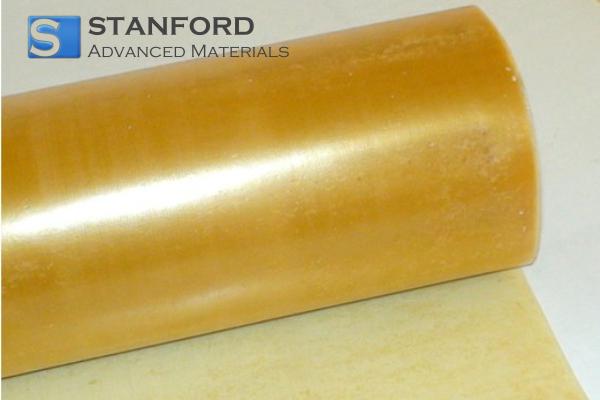Potassium: Element Properties And Uses
Description
Potassium is a highly reactive chemical element essential for various biological and industrial processes. It plays an important part in both plant and animal life.
Introduction to the Element
Potassium (K) is a chemical element with atomic number 19. It belongs to the group of alkali metals in the periodic table and shares properties with elements such as sodium and lithium. This soft, silvery‐white metal is indispensable in biological systems and occurs abundantly in nature, primarily in various minerals.
Potassium is characterised by its high reactivity, particularly with water. It is an essential component of fertilisers; consequently, it is indispensable for agriculture. It is also used in industry, ranging from manufacturing to medicine.
Chemical Properties Description
Potassium reacts readily with water, forming potassium hydroxide (KOH) and hydrogen gas. This reaction is exothermic and releases heat. Given its reactivity, potassium does not occur in its pure form in nature but is always found in compounds with other elements.
When potassium reacts with oxygen, it forms potassium oxide (K₂O) or potassium superoxide (KO₂). It also reacts with halogens, for example chlorine, to form potassium chloride (KCl). This compound is important in both industry and agriculture.
In addition to its reactions with water and oxygen, potassium forms various salts that serve as key components in fertilisers, food additives and certain medical treatments.
Physical Properties
Potassium is a soft metal with a low melting point of 63.5°C (146.3°F). Its physical properties render it suitable for applications that require a light, reactive metal.
|
Property |
Value |
|
Atomic Number |
19 |
|
Symbol |
K |
|
Melting Point |
63.5°C (146.3°F) |
|
759°C (1398°F) |
|
|
Density |
0.862 g/cm³ |
|
Colour |
Silvery‐white |
|
Reactivity |
Highly reactive with water |
|
Electronegativity |
0.82 |
Further information can be found at Stanford Advanced Materials (SAM).
Common Uses
Potassium has numerous applications in both industry and everyday life. It is most commonly used in fertilisers, given that it plays an essential role in plant growth. Potassium compounds such as potassium nitrate and potassium chloride are frequently incorporated in agricultural products to improve crop yields.
Apart from agriculture, potassium finds use in soap and cleaning agent production as well as in glass manufacturing. It is also involved in the production of various chemicals such as potassium hydroxide, which is used in cleaning agents and batteries.
In the medical sector, potassium is important for maintaining the electrolyte balance in the body, and potassium chloride is often utilised to treat potassium deficiency. Additionally, potassium compounds are used in fire extinguishers.
Preparation Methods
Technicians produce potassium by electrolysing molten potassium chloride (KCl). They pass an electric current through the molten salt, and potassium forms at the cathode. This method is necessary given that potassium does not occur in its pure form in nature due to its high reactivity.
Related Industrial Products
Several industrial products are related to potassium, primarily through its compounds. These include:
- Potassium nitrate (KNO₃): It is used in fertilisers, pyrotechnics and as an oxidising agent.
- Potassium hydroxide (KOH): It is used in soap production, cleaning agents and as a strong base in chemical processes.
- Potassium chloride (KCl): It is frequently used in fertilisers, food processing and in medicine.
- Potassium carbonate (K₂CO₃): It is used in glass manufacturing and as a drying agent in the chemical industry.
Frequently Asked Questions
What is potassium used for in fertilisers?
Potassium is crucial for plant growth and assists in water regulation, enzyme activation and photosynthesis. Potassium-containing fertilisers can increase crop yields and support plant health.
Is potassium toxic to humans?
Potassium itself is not toxic; it is an essential nutrient. However, an imbalance, either an excess or a deficiency, can result in serious health issues, such as cardiac arrhythmias.
Why does potassium react so strongly with water?
Potassium reacts strongly because it is an alkali metal. Its outer electron is easily lost, thereby leading to the prompt formation of compounds, particularly with water.
How is potassium produced commercially?
Technicians produce potassium through the electrolysis of potassium chloride (KCl). They pass an electric current through the molten salt, thereby depositing potassium at the cathode.
What are some products made from potassium compounds?
Common products include fertilisers (potassium chloride and potassium nitrate), soaps (potassium hydroxide) and glass (potassium carbonate). Potassium salts are also used in food processing and in medicine.

 Bars
Bars
 Beads & Spheres
Beads & Spheres
 Bolts & Nuts
Bolts & Nuts
 Crucibles
Crucibles
 Discs
Discs
 Fibers & Fabrics
Fibers & Fabrics
 Films
Films
 Flake
Flake
 Foams
Foams
 Foil
Foil
 Granules
Granules
 Honeycombs
Honeycombs
 Ink
Ink
 Laminate
Laminate
 Lumps
Lumps
 Meshes
Meshes
 Metallised Film
Metallised Film
 Plate
Plate
 Powders
Powders
 Rod
Rod
 Sheets
Sheets
 Single Crystals
Single Crystals
 Sputtering Target
Sputtering Target
 Tubes
Tubes
 Washer
Washer
 Wires
Wires
 Converters & Calculators
Converters & Calculators
 Write for Us
Write for Us




 Chin Trento
Chin Trento



